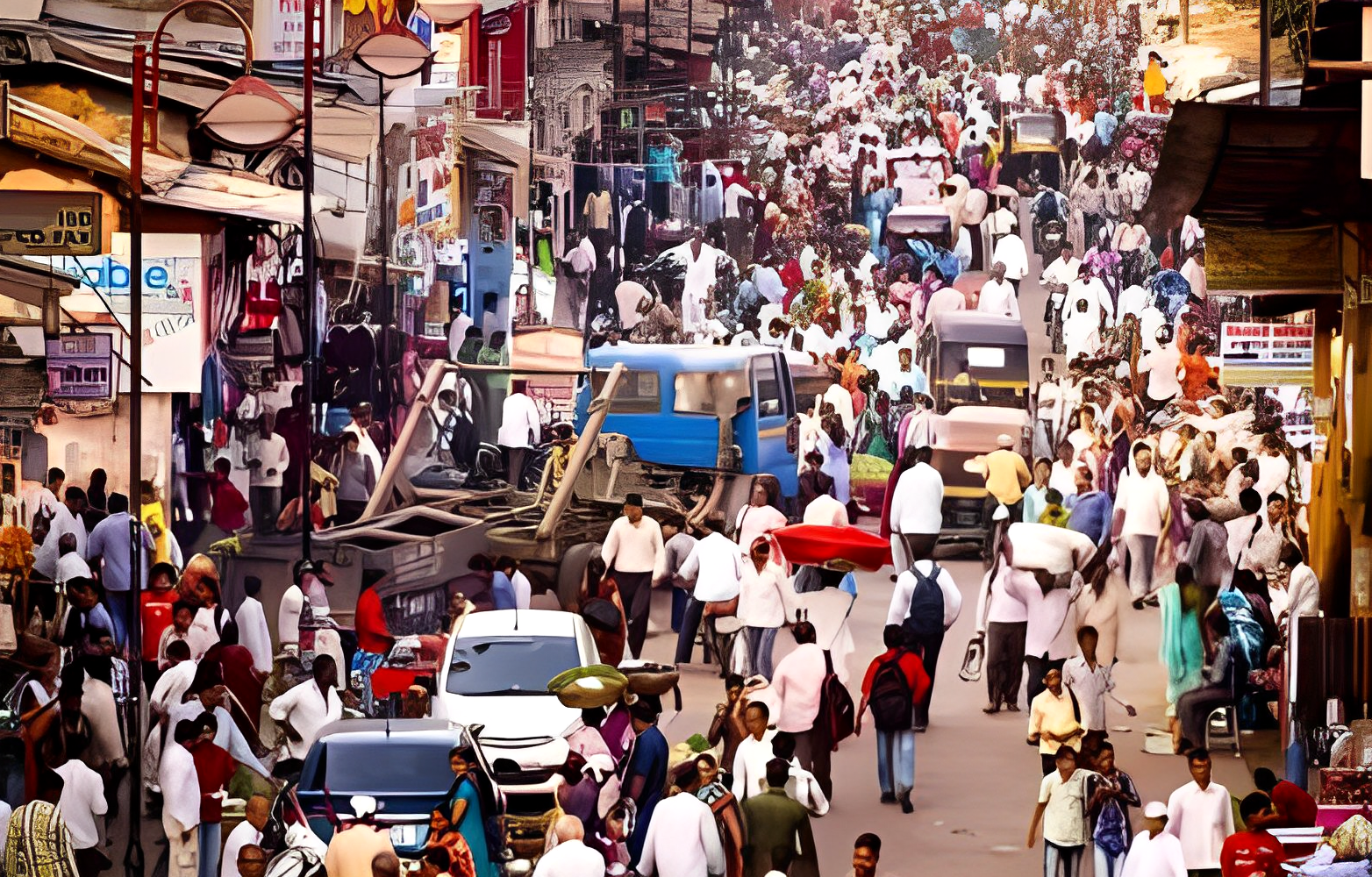Mumbai, the beating heart of India, throbs with a pulse unmatched in the nation. Its population, a swirling vortex of humanity, tells a fascinating story of ambition, dynamism, and constant evolution. To delve into this tapestry is to embark on a macroscopic study of urban dynamics, a journey that unveils the forces shaping one of the world’s most populous megacities.
Unveiling the Numbers: Population Mumbai
The population of Mumbai, estimated at over 21.6 million as of 2024, paints a vivid picture of its urban sprawl. This figure alone places it firmly within the ranks of global giants, a testament to its magnetic pull as a center of commerce, culture, and opportunity. But numbers, while impressive, do not tell the whole story. To truly understand Mumbai’s population, we must delve deeper, exploring the intricate threads that weave its complex mosaic.
Migration: The Driving Force: Population Mumbai
At the heart of Mumbai’s population surge lies migration. Drawn by the irresistible allure of economic prospects, individuals from across India converge on this urban oasis. This constant influx, estimated to contribute over 50% of the city’s population growth, shapes the city’s demographic landscape. From skilled professionals chasing dreams to families seeking a better life, each migrant adds a unique hue to the Mumbai tapestry.
A Kaleidoscope of Communities: Population Mumbai
The population of Mumbai is a vibrant kaleidoscope of diverse communities. Marathi, the city’s official language, mingles with Gujarati, Hindi, and Tamil, echoing the multilingual symphony that defines Mumbai’s spirit. Religious affiliations dance across the spectrum, each adding a distinctive touch to the city’s cultural fabric. This rich tapestry of ethnicity, language, and belief is a defining characteristic of Mumbai’s population, fostering a unique sense of unity amidst diversity.
Challenges and Opportunities: Population Mumbai
The sheer size and dynamism of Mumbai’s population present both challenges and opportunities. On the one hand, managing infrastructure, providing for basic necessities, and ensuring social welfare for such a large and diverse populace are daunting tasks. On the other hand, Mumbai’s population represents a formidable human resource pool, brimming with talent and potential. Harnessing this potential through effective education, skill development, and job creation programs can propel the city, and consequently, the nation, towards unprecedented heights.
Deepening the Dive: Exploring the Layers of Mumbai’s Population
Beyond the headline numbers and broad narratives, lies a deeper understanding of Mumbai’s population, waiting to be unearthed. Here, we delve into the complex layers that define this urban phenomenon:
1. The Informal City: Population Mumbai
Alongside the gleaming towers and bustling business districts, a significant portion of Mumbai’s population resides in informal settlements. These spaces, characterized by limited infrastructure and precarious living conditions, house millions who fuel the city’s informal economy. Exploring their struggles, aspirations, and the unique social networks they forge within these communities paints a crucial picture of Mumbai’s underbelly.
2. Gender Dynamics: Population Mumbai
Population Mumbai boasts a significant female workforce, playing a vital role in various sectors. Examining their experiences, including navigating discrimination in the workplace, balancing family obligations, and carving out independent identities, offers valuable insights into the city’s evolving gender dynamics.
3. Ageing and Youth: Population Mumbai
Population Mumbai is ageing, presenting both challenges and opportunities. Exploring the experiences of senior citizens, their contribution to society, and the support systems they require, paints a crucial picture of the city’s changing demographics. Meanwhile, the city’s young population pulsates with energy and ambition. Delving into their aspirations, struggles with affordability and access to opportunities, and their role in shaping the city’s future paints a vibrant portrait of Mumbai’s next generation.
4. Environmental Impact:
The sheer density of Population Mumbai places a significant strain on its environment. Exploring the impact of waste management, pollution, and resource depletion on the city’s residents, and highlighting community-driven initiatives and green solutions, sheds light on the delicate balance between urban development and ecological sustainability.
5. Beyond Borders:
Mumbai’s population extends beyond its physical boundaries, with a vast diaspora spread across the globe. Exploring the interconnectedness of these communities, their influence on the city’s cultural landscape, and the role they play as ambassadors of Mumbai’s spirit on the world stage, reveals the city’s global reach and impact.
6. Stories from the Streets:
Beyond statistics and analyses, the true essence of Mumbai’s population lies in the individual stories woven into its fabric. Highlighting the experiences of ordinary citizens – the street vendor, the aspiring artist, the young entrepreneur – through personal narratives and vignettes, brings the city’s population to life, adding depth and nuance to the macro-level understanding.
These are just a few avenues to delve deeper into the tapestry of Mumbai’s population. By exploring these layers, we gain a richer appreciation for the city’s dynamism, complexity, and the countless narratives that make it a true microcosm of the human experience.
Looking Ahead:
As Mumbai’s population continues to swell, the future holds both excitement and uncertainty. Addressing issues like sustainable development, affordable housing, and environmental protection will be crucial in ensuring a vibrant and livable future for its inhabitants. However, the inherent spirit of Mumbai’s population, marked by resilience, resourcefulness, and a shared dream, offers a beacon of hope.
In conclusion, studying the population of Mumbai is not merely a statistical exercise; it is a window into the soul of a nation. Understanding its dynamics, appreciating its diversity, and navigating its challenges will not only shape the future of one city but also provide valuable insights into the urban experience across the globe.
Sources:
- Macrotrends. (2024, August 24). Mumbai, India Metro Area Population 1950-2024. Retrieved from https://www.macrotrends.net/cities/21206/mumbai/population
- Statista. (2023, July 10). Population of Mumbai India 1960-2023. Retrieved from https://www.statista.com/statistics/911012/india-population-in-mumbai/
- Wikipedia. (2024, January 5). Mumbai. Retrieved from https://en.wikipedia.org/wiki/Mumbai




